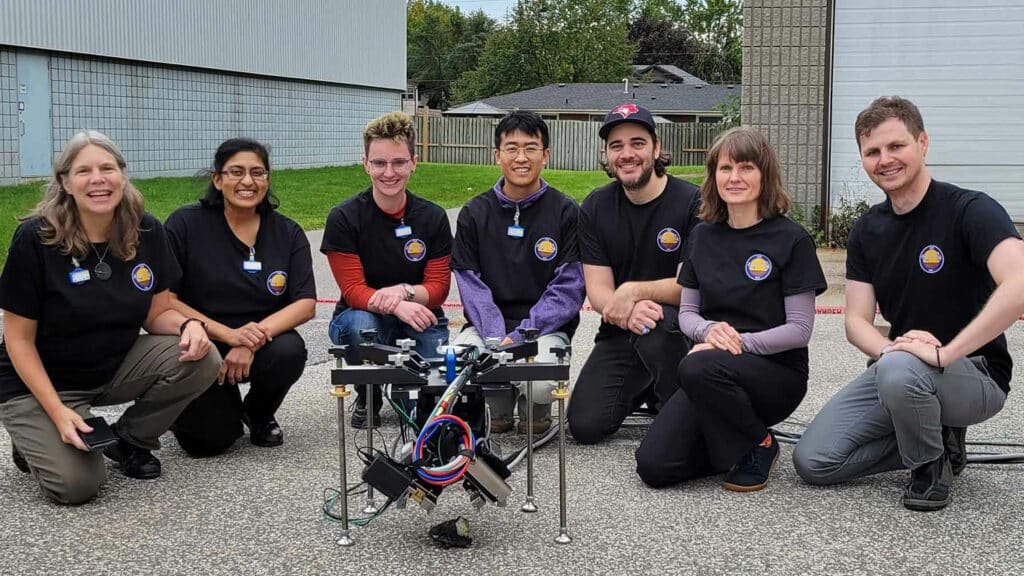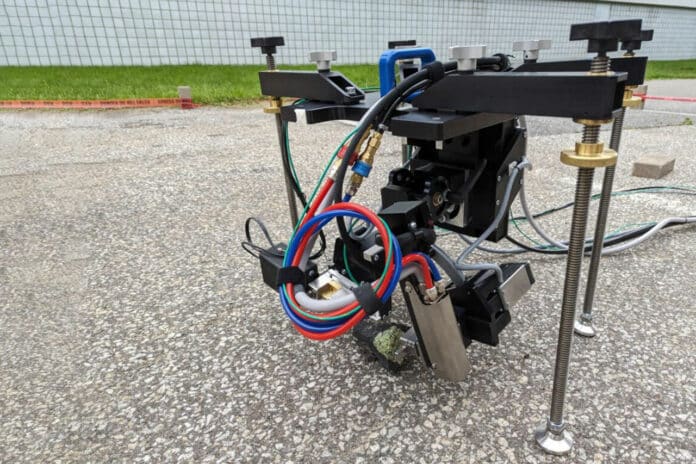Minerals can provide valuable insights into the geological processes, impact history, paleoclimate, and habitability of planetary bodies like Mars. Therefore, to understand the evolution of Mars, we need to study its mineralogical record.
X-ray diffractometers are widely used in laboratories around the world to characterize minerals. But until now, there has been no hand-held version of such a device that could be used to analyze minerals in situ, either in person on-site on Earth or remotely on celestial bodies like the Moon, Mars, and beyond.
Recently, a research team led by Earth sciences professor Roberta Flemming from Western University, in collaboration with industry partner Proto Manufacturing, has developed a hand-held diffraction tool that can identify minerals in their natural setting on planetary surfaces such as Mars.
The miniaturized in situ X-ray diffractometer (ISXRD) is a groundbreaking development that has the potential to revolutionize space exploration by allowing for in situ mineral analysis on planetary surfaces.
This innovation was funded by the Canadian Space Agency through its FAST initiative, and it’s a significant leap forward in our understanding of planetary geology.

“There is only one diffractometer anywhere in the solar system that is off Earth, and that is CheMin (Chemistry and Mineralogy) on the Curiosity rover,” said Flemming, a planetary mineralogist and faculty member at Western’s Institute for Earth and Space Exploration. “It uses a drill to powder or pulverize the rock samples, scoops them up, and analyzes the material inside the machine.”
That process is too slow and lacks context due to fragmentation and possible contamination, says Flemming. In contrast, the newly proposed miniaturized version of a traditional laboratory diffractometer allows for quick, precise in-person remote mineral characterization, which is essential for deciphering the geological history of planets like Mars and could potentially reshape future space missions.
The prototype version of ISXRD was built by Proto and mounted as a standalone instrument as part of a simulated rover mission. It was successfully tested last month in LaSalle, Ont, on rocks similar to those that would be found on Mars. The team sent commands to the simulated rover in LaSalle to target and analyze these rocks.
Researchers used the ISXRD to characterize various rock samples, including gypsum, mudstone, basalt containing a mantle xenolith (cooled magma), and breccia. Data was acquired on the ISXRD in as little as 17 minutes per target.
“It’s a very complicated design because critically, you have to get the science right, but you also have to make it small, which means less power,” said Flemming in a statement. “When you try and scale down something for space that normally fits in a lab, you have to figure out a way to power it with a lot less energy. And you have to make it robust enough that it could survive the launch and landing and small enough to mount on a rover arm but sophisticated enough to move the way we need it to move.”
